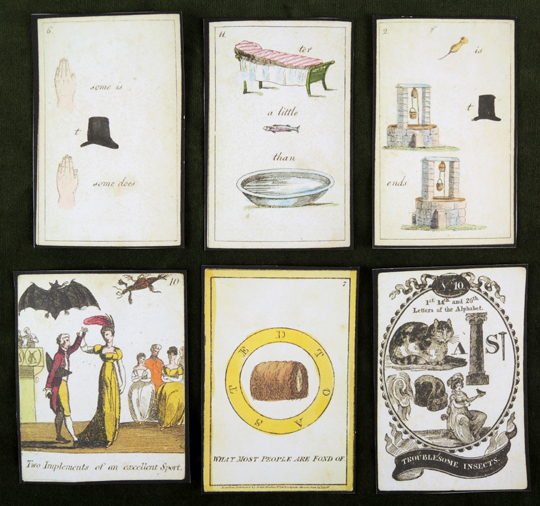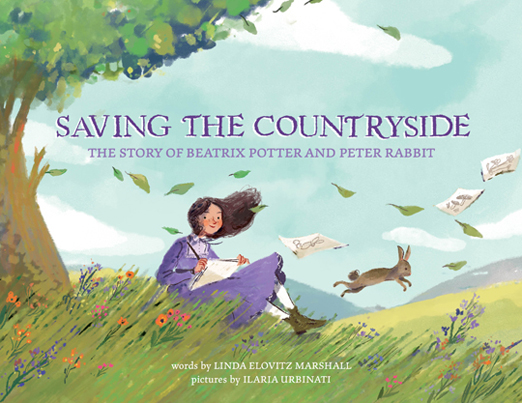 What could be better then re-discovering a beloved author? Realizing she’s even more amazing then you thought! Author Linda Elovitz Marshall enjoys creating spunky characters. But on a literary ramble in the UK, she discovered that Beatrix Potter was a real life tour de force when it came to writing, publishing, and land conservation! Her most recent non-fiction picture book, Saving the Countryside: The Story of Beatrix Potter and Peter Rabbit (Little Bee Books, 2020) shares the wonderful facts behind this literary icon.
What could be better then re-discovering a beloved author? Realizing she’s even more amazing then you thought! Author Linda Elovitz Marshall enjoys creating spunky characters. But on a literary ramble in the UK, she discovered that Beatrix Potter was a real life tour de force when it came to writing, publishing, and land conservation! Her most recent non-fiction picture book, Saving the Countryside: The Story of Beatrix Potter and Peter Rabbit (Little Bee Books, 2020) shares the wonderful facts behind this literary icon.
Did you have a favorite Beatrix Potter book when you were growing up?
My favorite Beatrix Potter book was, of course, Peter Rabbit. Who could resist that curious, mischievous bunny? I don’t quite remember reading Beatrix Potter’s other books when I was growing up. However, I do remember holding them…and loving that the books were just the right size for my hands!
Can you tell us a little about the literary ramble you took in 2018?
I’m a member of Kindling Words, a non-profit organization of children’s book authors, illustrators, and editors. Every year the organization holds a weekend-long conference on the east coast and a week-long writing retreat on the west and, every once-in-a-while, the group organizes a trip.
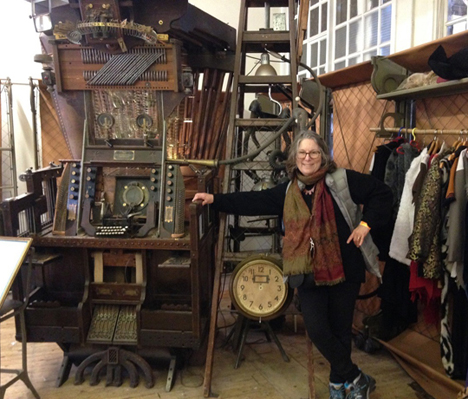
Pipe organ in the Story Museum, Oxford, England.
The “Literary Ramble” to England was such a trip. Along with twelve other children’s authors and illustrators, I visited the homes, workspaces, and communities where Lewis Carroll, Beatrix Potter, Kenneth Graham, J.K. Rowling, Roald Dahl, J.R.R. Tolkien, C.S. Lewis, and Philip Pullman lived and wrote. It was an amazing and wonderfully inspiring trip!
How did you research this book?
My research began while visiting Beatrix Potter’s home (Castle Cottage) in England, I listened intently as Mandy Marshall (no relation to me), the curator/hostess described Beatrix’s background and upbringing.
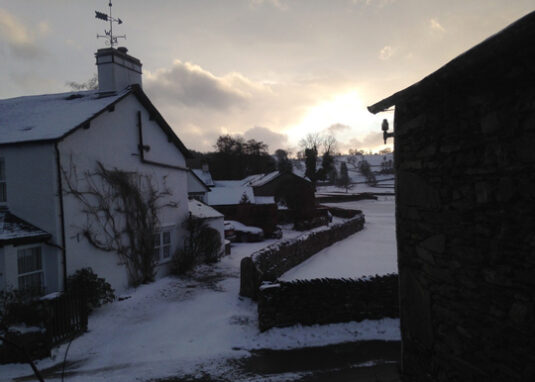
Near Sawrey, England, where Beatrix Potter’s estate is located.
Prior to that trip, I’d imagined Beatrix as a sweet writer of charming bunny stories who was, in my imagination, kind of a goody-goody. Instead, I learned that she was a feisty girl who – more than anything – wanted to be outside (or inside) exploring and discovering and researching. She grew up to be a feisty adult, too, who wasn’t about to let anyone hold her down. When I heard all this, I knew I had to learn more about her.
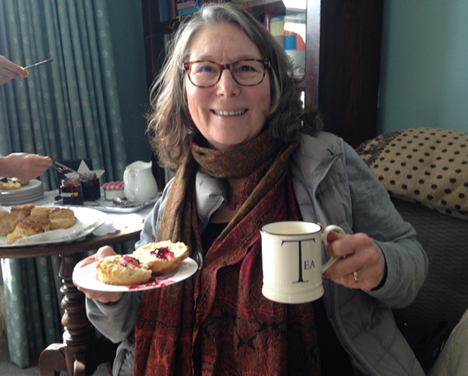
Enjoying tea and scones inside Castle Cottage, Beatrix Potter’s home.
I dove into research, visiting museums near where Beatrix lived, purchasing books to use for continuing my research at home. I also contacted Linda Lear, a brilliant researcher and author whose book, Beatrix Potter: A Life in Nature helped immensely. Linda Lear also fact-checked my manuscript. She – and everyone I contacted – was wonderfully helpful.
I was trained as an anthropologist and am naturally curious. I researched…and researched…and researched. I absolutely adore doing research!
You also write fiction…how is the writing process different? Or is it the same?
Candace Fleming, who is an amazing writer and an absolutely superlative teacher, made a statement that I’d like to paraphrase. In both fiction and non-fiction, you’re baking a cake. In fiction, you throw in whatever ingredients you want. In non-fiction, you can use only the ingredients you’re given. But in both cases, you want it to taste good – so good that people want to devour the whole thing. And, in both cases, it needs a beginning, a middle, and an end.
I love writing fiction as well as non-fiction. I’ve tried turning non-fiction stories into fiction stories. I did that with Grandma Rose’s Magic, which was inspired by my grandmother’s sewing business.
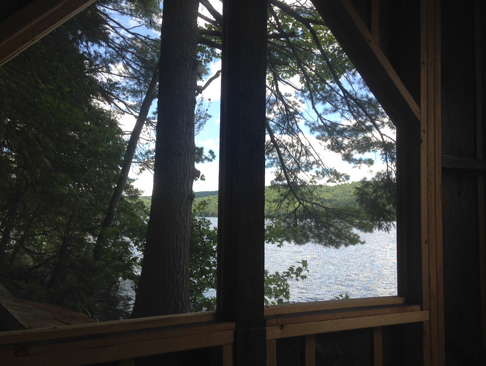
View from the author’s summer studio in the Adirondacks.
In both cases, a story needs “heart.” To write about Beatrix with “heart,” I needed to read about her, feel her feelings, and know her as much as possible. Only that way, could give my readers a sense of who she was and what was important to her. In my book, The Polio Pioneer: Dr. Jonas Salk and the Polio Vaccine, I needed to understand – and feel – what was important to Dr. Salk so I could convey that to my readers. Whether writing fiction or non-fiction, I want to make my readers feel.
If you could ask Beatrix Potter herself a question, what would it be?
Dear Beatrix,
Did I tell your story well? Are you happy with it? And, Beatrix, what do you think of the way that women are being treated these days? What would YOU do if you lived now?
Sorry, that’s four questions. I hope that’s okay. Did I mention that I’m incredibly curious about … almost everything?!
Images courtesy of Linda Marshall. Book cover illustrated by Ilaria Urbinati, courtesy of Little Bee Books.

 Fiction writers are famous for creating elaborate new worlds. But sometimes a book location actually exists in the real world! We searched for real locations made famous by stories (but not the movie versions of the books – sorry Hobbiton, New Zealand). Even more exciting….Katie has actually visited one of the more exotic locations, as evidenced in the above photo.
Fiction writers are famous for creating elaborate new worlds. But sometimes a book location actually exists in the real world! We searched for real locations made famous by stories (but not the movie versions of the books – sorry Hobbiton, New Zealand). Even more exciting….Katie has actually visited one of the more exotic locations, as evidenced in the above photo.
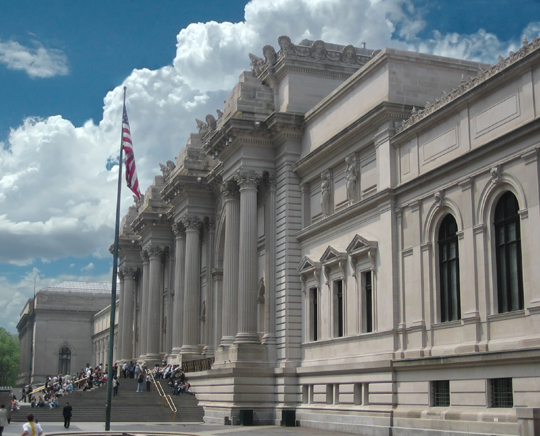


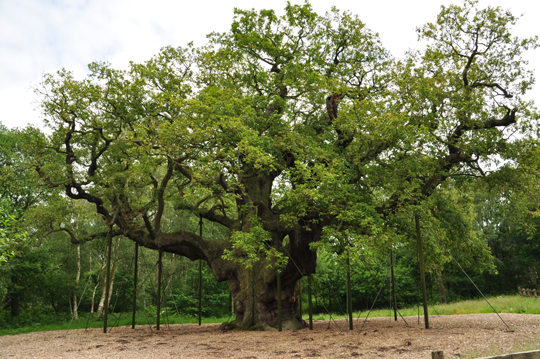

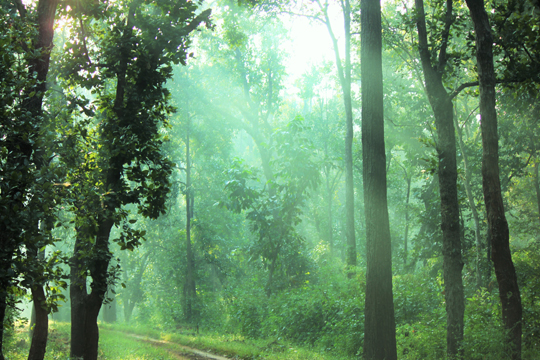


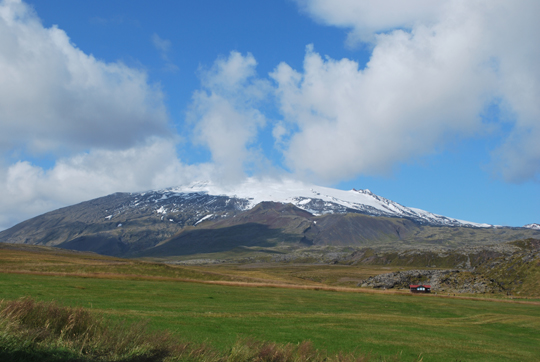


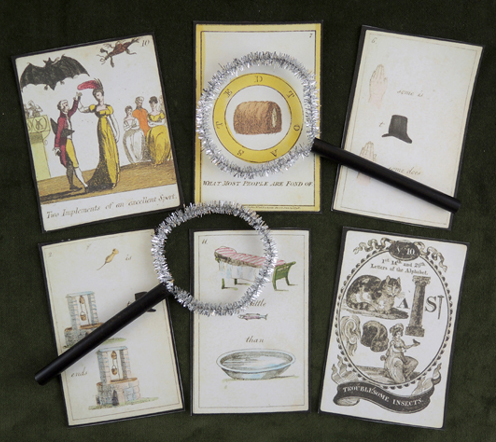 Calling all consulting detectives…grab your sparkle stem magnifying glass and examine this most intriguing collection of 18th and 19th century puzzle cards. And, while the individual man is an insoluble puzzle, the answers to these cards are at the end of the post (and you can print a set of your own)!
Calling all consulting detectives…grab your sparkle stem magnifying glass and examine this most intriguing collection of 18th and 19th century puzzle cards. And, while the individual man is an insoluble puzzle, the answers to these cards are at the end of the post (and you can print a set of your own)!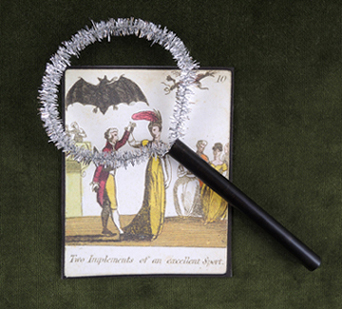 And what of those curious cards? They are reproductions of 18th and 19th century rebus puzzle cards in our library’s
And what of those curious cards? They are reproductions of 18th and 19th century rebus puzzle cards in our library’s 